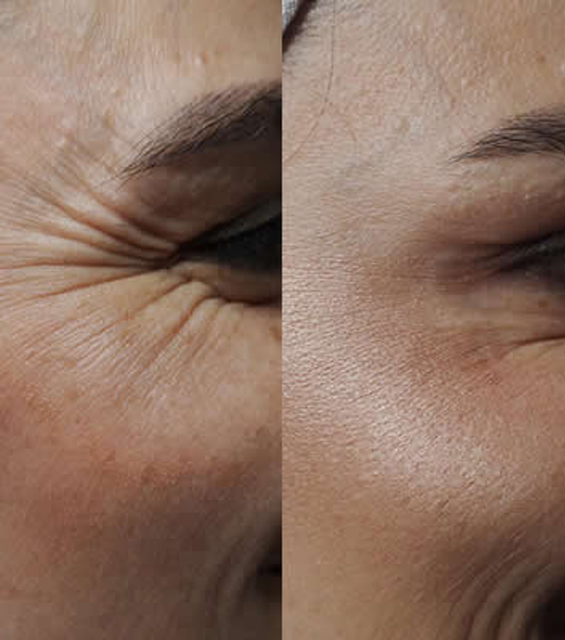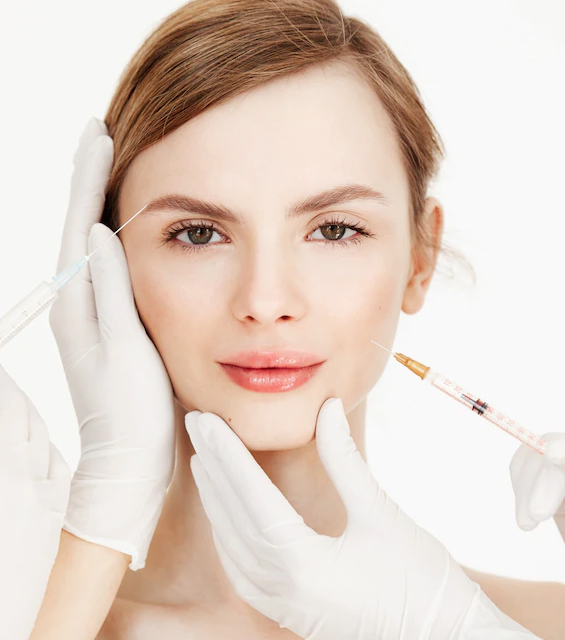- +90 538 050 44 63
-
Cevizlik ebuziya cd. 34142 Bakırköy / İstanbul
What is Botox?
Botox is the short name for botulinum toxin, a group of molecules produced by the bacteria clostridium botulinum. It is called a "toxin" because in very high amounts it can act as a "neurotoxin" in the body by blocking the action of certain types of nerves.
Botox works by blocking nerve signals in the muscles where it is injected. When these nerve signals are interrupted, the affected muscle is temporarily paralyzed or frozen. Because of these selected muscles, some wrinkles can be smoothed, reduced or even eliminated.
It can be injected directly into the small muscles of facial expression, in the lines formed with age, to relax the muscle tension in the skin; thereby loosening lines and wrinkles. It can also be used to relax the muscles that pull the face down, for example in the neck muscles, to give a lifting effect. Likewise, it can also be used to block the sweat glands, so it can be used to treat excessive sweating (hyperhidrosis). Migraines can also be effectively treated with Botox injected at several points on the scalp. '
The effect can last between 3-6 months, depending on the individual.
Does Botox have side effects?
Side effects of Botox are rare, but as with any injection in the skin, there is a risk of bruising and tenderness at the injection site. Headaches can sometimes be experienced by people on the first day of treatment. Most rare side effects include flu-like symptoms and difficulty swallowing.
Who can / cannot have Botox?
Botox is generally considered an extremely safe treatment and there are few exceptions. Pregnancy is a contraindication, as are myasthenia gravis and some other rare neurological conditions.
Botox applied areas
It is applied to remove wrinkles in the forehead area, lines between the eyebrows, lines on the side walls of the nose, crow's feet around the eyes, lines around the mouth and neck lines. Botox is a medical treatment method that gives successful results. Botox is among the most preferred methods for eyebrow lifting, removal of facial anger and hyperhidrosis treatments.
What should you ask your counselor before considering a treatment?
It is extremely important that you feel safe in your practitioner's hands while undergoing any treatment. Never be afraid to ask lots of questions to make sure the job is done correctly and safely.
How much does Botox cost?
‘It depends on the clinic and practitioner. With a well-trained and experienced doctor in the center of Istanbul, you pay approximately 600 – 100 TL for a full face treatment. Beauty therapists, although not medically qualified, are unfortunately able to offer treatments and prices can drop further accordingly.
What is filler?
Fillers are a group of injectable medicinal products designed to add volume to tissues. There are different types of fillers such as hyaluronic acid fillers (the most common type), collagen stimulating fillers (sculptra). Fat transfer can also be considered a 'filler'.
Factors such as advancing age, facial expressions and sun rays cause a decrease in the amount of collagen, elastin and hyaluronic acid in our skin. The reduction of these substances, which gives our skin a young and healthy appearance, causes collapses, lines and wrinkles on the skin. Hyaluronic acid-containing fillers eliminate such complaints and add volume to the skin. The effect usually lasts for 18 months.
Jawline filler
Side effects with dermal fillers are usually rare, but include bruising, swelling, swelling, and rarely vascular occlusion (where the injected filler is accidentally injected into a blood vessel, causing obstruction and damage to the tissue that the vein supplies with blood).
What Should You Ask Your Doctor Before Filling? The main question to be asked is to what extent their qualifications and experience are. It is important to verify that your practitioner is medically qualified and can inject hyaluronidase to dissolve any filler in case of a vascular blockage.
Who Can Have Filling?
Contraindications for fillers include local infection of the skin, previous reaction to the filler, allergy to any substance in the filler, and pregnancy. Because fillers are often considered "inert medical devices", they don't necessarily need to be prescribed by a doctor, and they don't have to be purchased without a prescription – so there is a possibility that fillers are injected by beauticians and hairdressers. For this reason, make sure that the practitioner is a doctor before getting a filling. Areas that can be filled – Filling Types Nasolabial lines (Filling the lines going down the edge of the nose), Philtral lines (Filling the lines between the nose and mouth), lip augmentation, filling the radial lines around the lip, nasal filling, lip Clarification of the contour of the jawline, removal of under-eye pits, removal of under-eye bags, nose corrections, augmentation of the cheeks and cheekbones, clarification of the jaw line are the cases where filling can be applied and the complaints that require filling. How is the filler applied?
After the application area is anesthetized with the help of anesthetic cream, the filler is injected into the complained areas with the help of fine needles. The filling process is a short process that can be completed in 15-30 minutes. After the filling application, there is no situation that interferes with your daily routines. After the procedure, slight swelling, bruising or redness may occur. These effects, which are quite normal to appear with the effect of the procedure, regress spontaneously after 1-2 days. Consuming plenty of water after the filling process is extremely important as it will add volume to the filling. Do not forget to drink plenty of water after the procedure.
In which cases should I have Botox and in which cases fillers?
Botox is preferred to open fine lines caused by facial expressions, and fillers are preferred to fill very deep wrinkles. It is inconvenient to use botox in the detention area, which is used in the forehead, the middle of the eyebrows, the corners of the eyes where the lines called crow's feet occur. On the other hand, bruises, brown circles and bags that occur in the detention area can be resolved with under-eye light filling. Shaping and clarifying deformed facial lines are also among the uses of cosmetic fillers. While Botox prevents wrinkles by relaxing the muscles, the filler fills the gaps by increasing the lost volume. Botox treatment areas; in the middle of the eyebrow, the edge of the eye, in some cases the upper lip area and eyebrow lifting, also; It is used in the armpit, hand and foot areas where sweating treatment is applied. If the filling is; It is used in the areas of under eye, cheek, lip, lip and nose, non-surgical nose shaping and chin oval clarification.
 TR
TR

